
Posted on 06/22/2011 4:43:22 AM PDT by Homer_J_Simpson

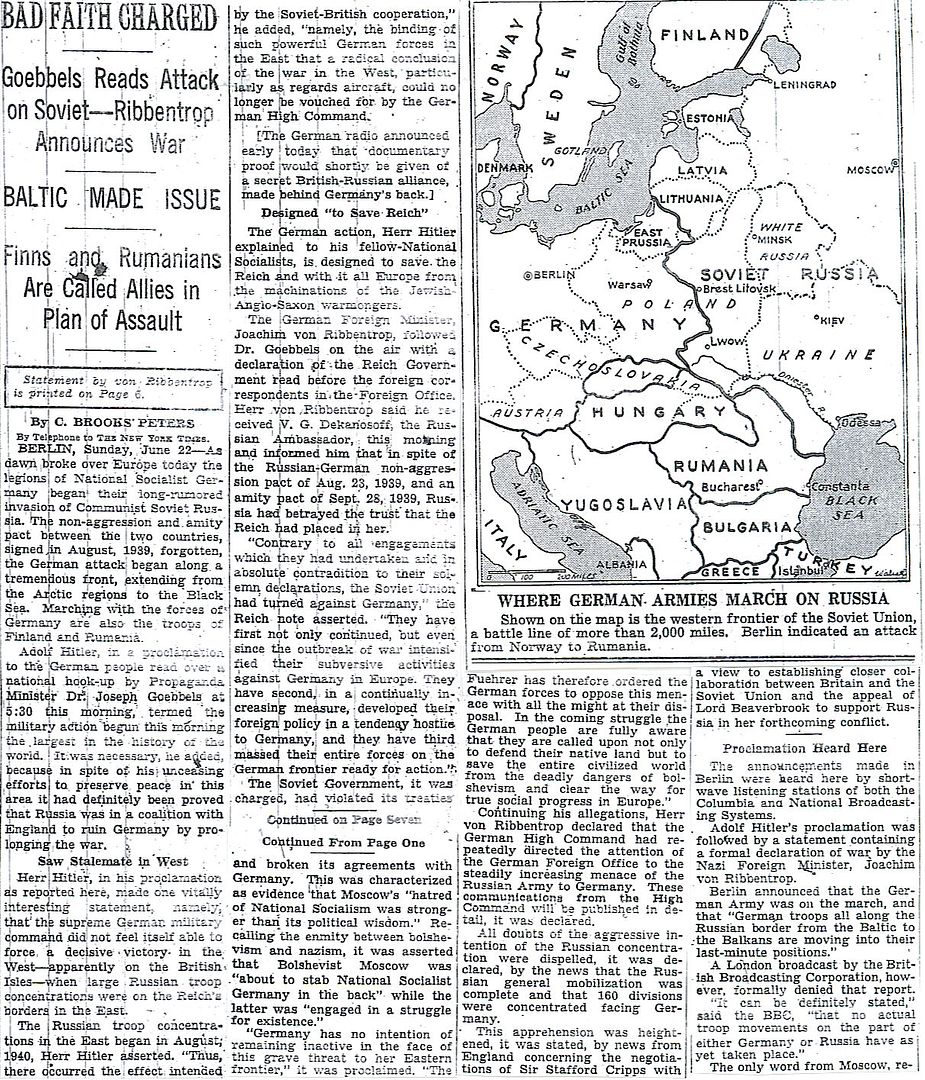

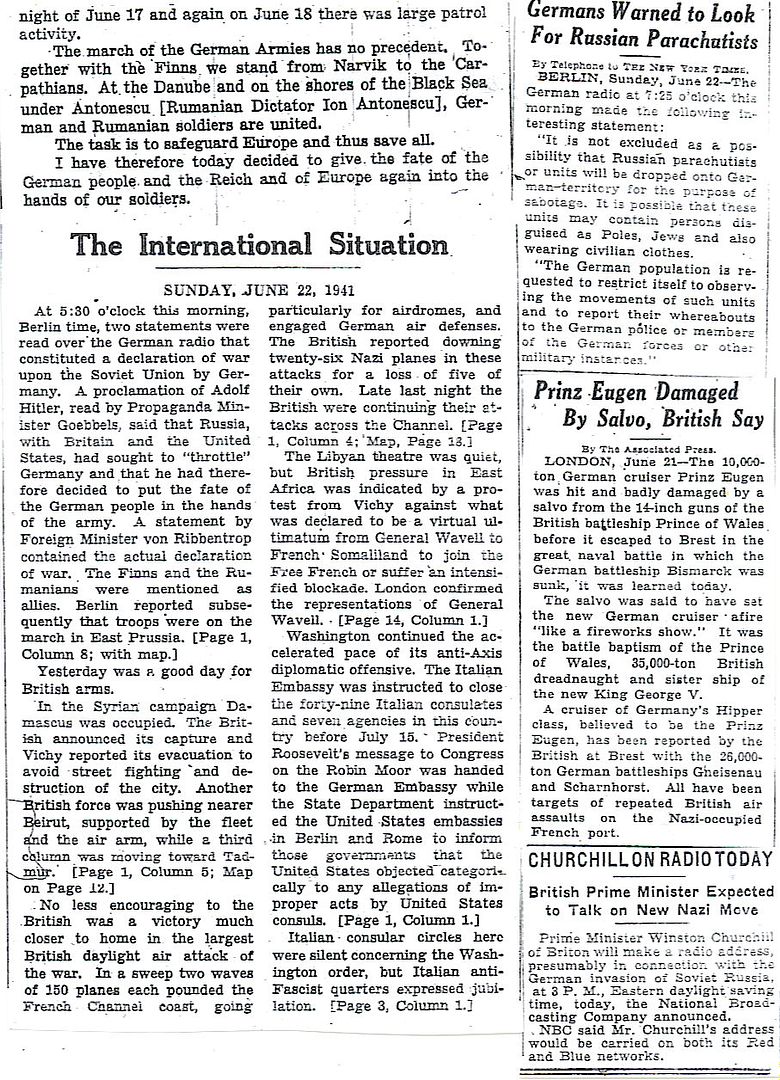
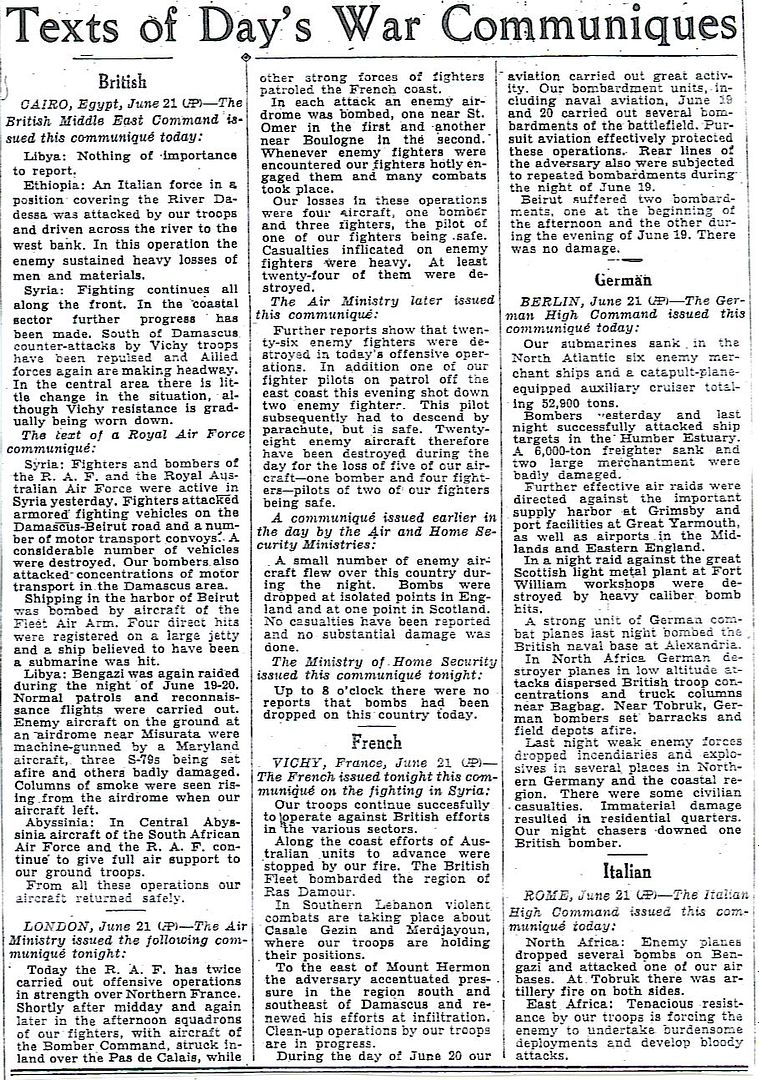

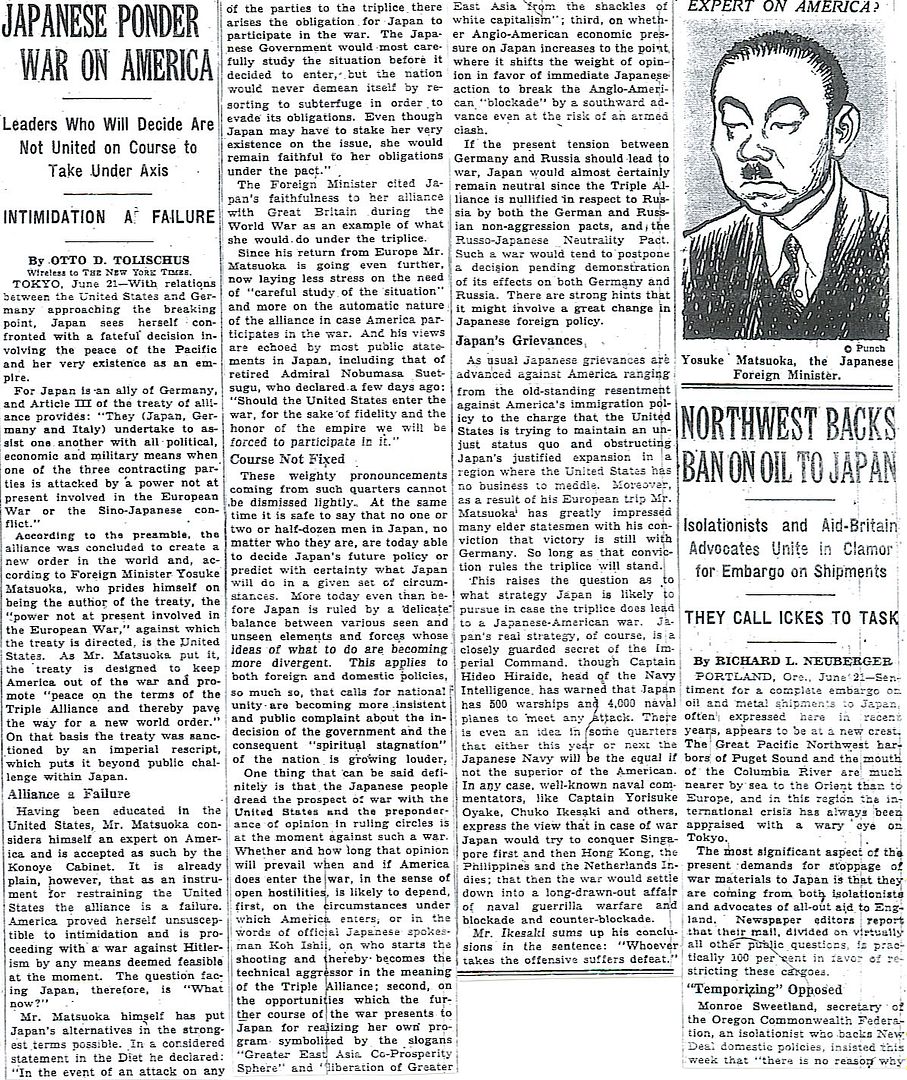
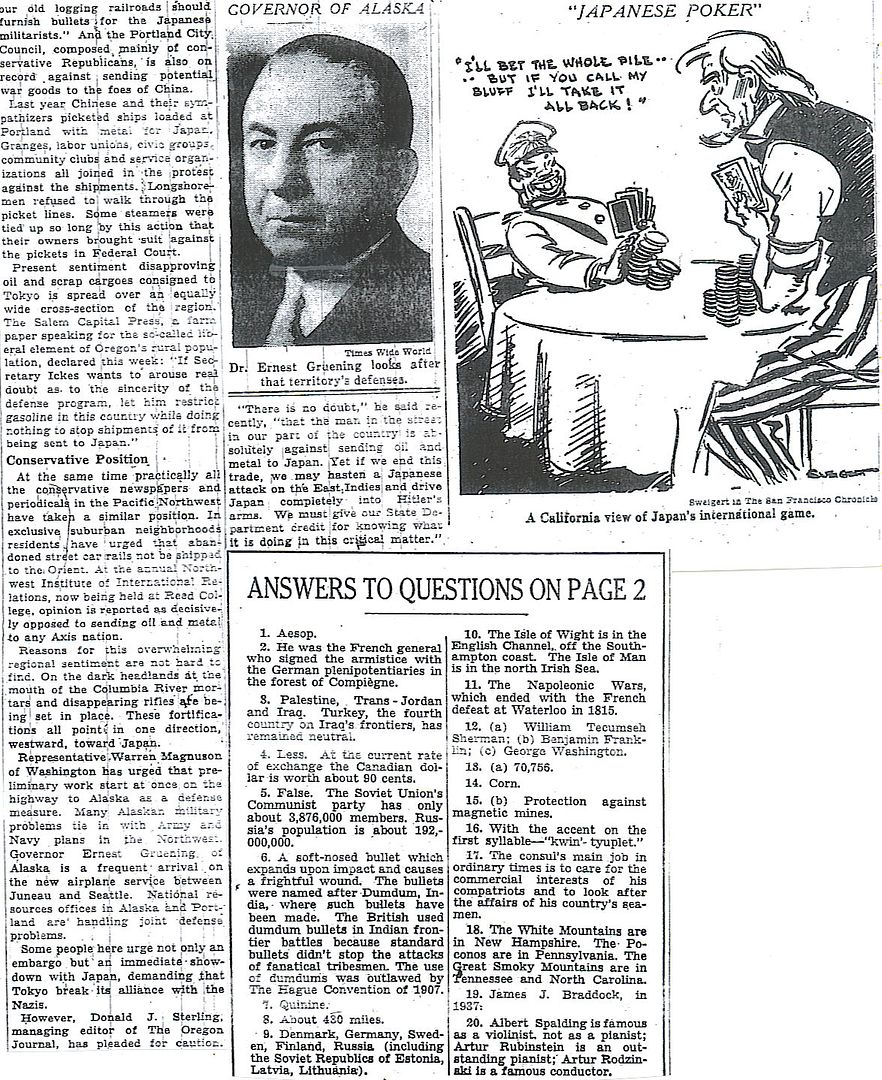

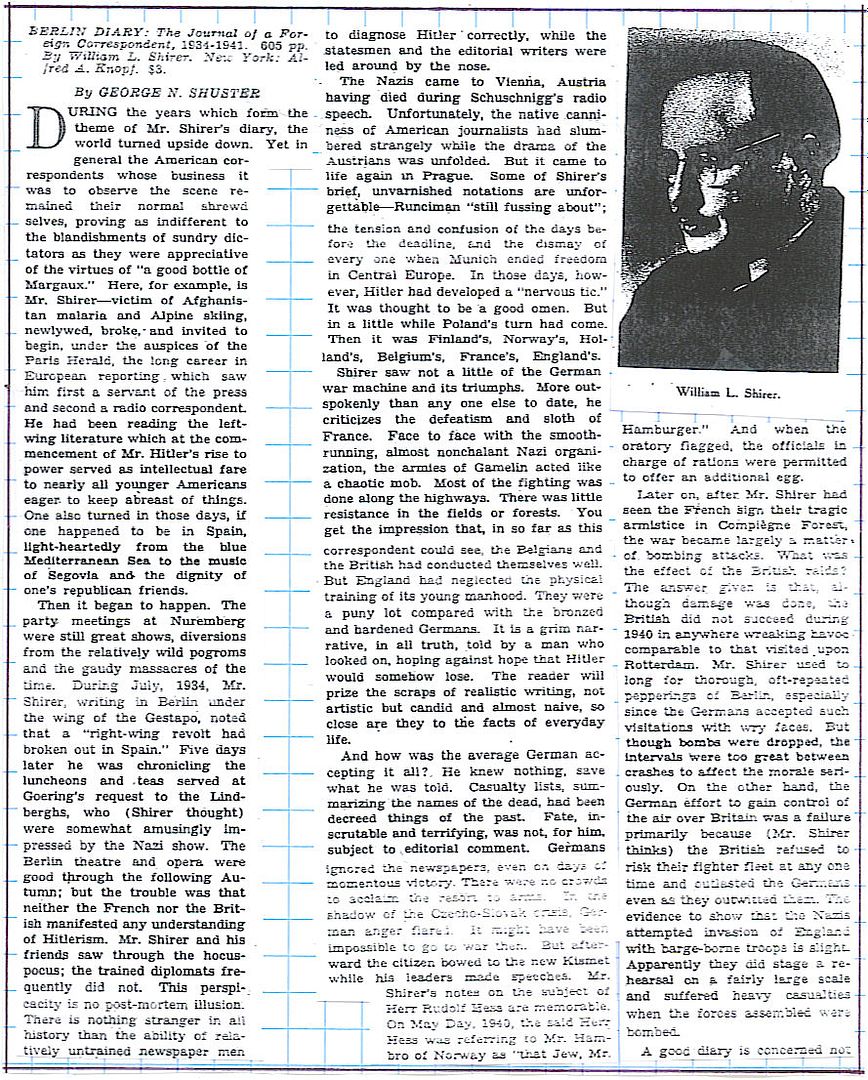
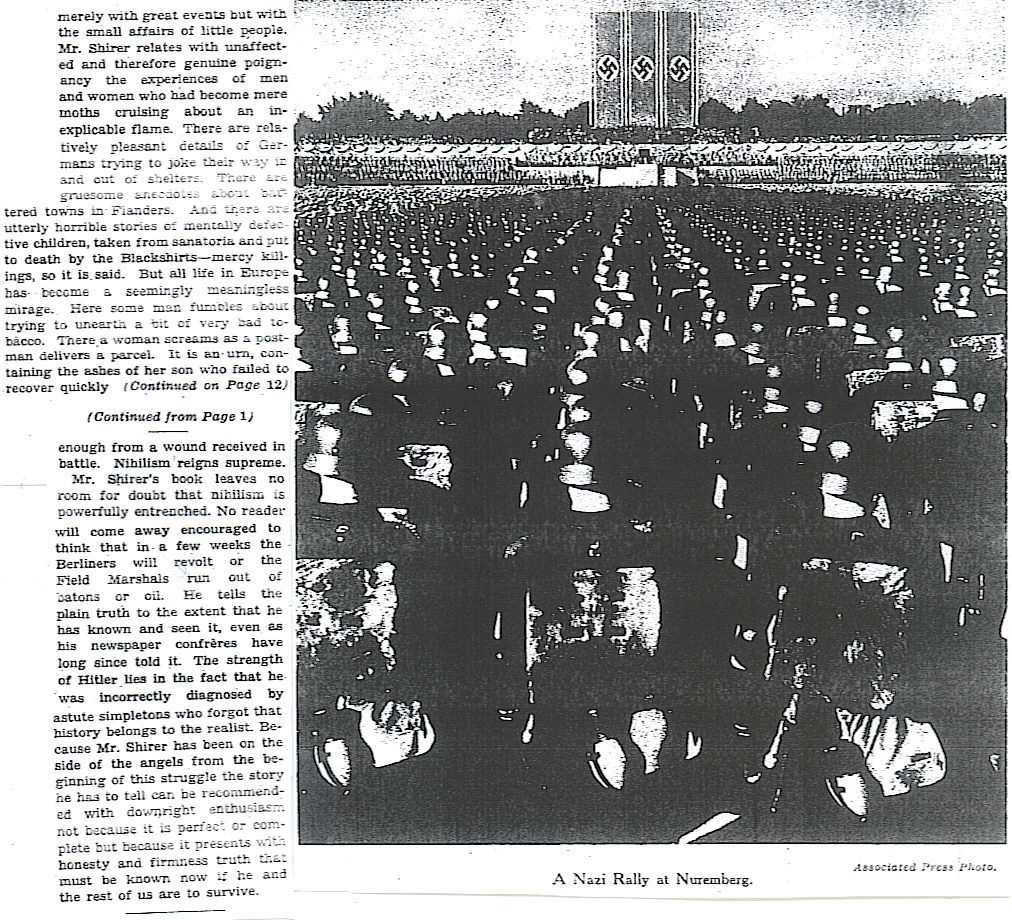
Roseman, Mark. The Wannsee Conference and the Final Solution: A Reconsideration. New York: Picador, 2002. 172pp. ISBN 0-312-42234-2.
It is always difficult for the common man to wrap their mind around the Holocaust. The thought of a government creating a national policy of destroying a singular sect of their own citizenry is almost inconceivable.  Yet there are many examples of such genocidal policies throughout history. The Nazi’s policy of extermination of the Jews is the most prolific and well known of such government policies. However, the transition of the Nazi’s policy of exclusion to eventual extermination is not a clear one. There is no set list of orders that show clearly when Hitler and Himmler made the decision to embark on a quest of Jewish extermination. This has led to many studies that try and determine when the “Final Solution,” as it will be known, was decided upon.
Yet there are many examples of such genocidal policies throughout history. The Nazi’s policy of extermination of the Jews is the most prolific and well known of such government policies. However, the transition of the Nazi’s policy of exclusion to eventual extermination is not a clear one. There is no set list of orders that show clearly when Hitler and Himmler made the decision to embark on a quest of Jewish extermination. This has led to many studies that try and determine when the “Final Solution,” as it will be known, was decided upon.
One marker towards the “Final Solution” was a conference held in a lush section of Berlin on the shores of Lake Wannsee. This meeting was conducted by Heinrich Himmler’s right hand man, Reinhard Heydrich. In this meeting he calls together not only members of the SS, but others from the civilian government side to coordinate details as to what the fate of Jews under German rule as well as those outside German borders. This conference, which will be called the Wannsee Conference, was held on January 20th, 1942. Clearly, this conference cannot be considered the beginning of a policy of mass murder since large scale killings had already begun long before this actual meeting. However, a look at this conference may show the effort to solidify national policy on Jewish extermination as well as put any dissenters to the policy on notice to fall in line.
In Mark Roseman’s book, The Wannsee Conference and the Final Solution: A Reconsideration, another look at the significance of this conference is taken. Roseman takes an analytical approach to exploring the purpose of this conference from not only the players involved in the conference itself, but in general policy that would occur as a result of the conference. The author is quick to point out the fact that just knowing about this meeting at all is an exception instance in history. The Nazi’s went to great lengths to destroy as much of the evidence to the Holocaust as their position in the war became more desperate. Of course the scope of the Holocaust was so large that this was a largely impossible task and as a result much evidence was left behind. A copy of the minutes from the Wannsee Conference was one of these items that slipped through the cracks. Initially there were only 30 copies of this document made for a very limited distribution list. Of those 30, only one survived to be found by Allied prosecutors just as the Nuremberg Trials were underway.
An important aspect of Roseman’s evaluation of the Wannsee Conference is in his evaluation of the individuals who were involved in the conference itself. From an overall perspective this could be broken into two groups; Hitler’s government secretaries, and SS hierarchy. However, Roseman shows the importance of one section of the participants that almost places them in their own category. Representatives from the Generalgouvernement present at the meeting, including Hans Frank’s right hand man Josef Bühler had a particularly strong investment in the issue of the Jewish question. Roseman points to Frank’s desire to make the Generalgouvernement into a jewel of the German occupied areas. This desire would include ridding the land of the 2 million plus Jews that were already there or shipped to the region as a result of other efforts to relocate the Jews. As the policy of “evacuation” was discussed, which really was just a euphemism for extermination since there really was no set plan as to where to evacuate these Jews to, Bühler was quick to volunteer the Jews in the Generalgouvernement to be among the first “evacuated” pointing out the proximity of these Jews would make them easier to transport to wherever they were to be sent in the east.
Another primary issue of the Wannsee Conference that the author takes time to look at in detail is the fate of the Mischlinge. These were individuals who were only part Jewish, being either half-Jew (first degree Mischlinge), or a lesser percentage (second degree Mischlinge). These individuals were discussed in terms of who would be treated as full Jews and “evacuated” and who would be sent to the so-called “old-age ghetto” in Thereseinstadt. Roseman points out that this policy was only a temporary salvation since most of the occupants of Thereseinstadt would eventually end up in Auschwitz. However, he also shows the degree of detail in which this very grey area in the Nazi policy was addressed with the conference itself showing a clear shift against the Mischlinge in question.
This book is truly designed for the academic reader and not the casual history fan. The source material used for Roseman’s work is extensive and mostly consisting of original Nazi documentation. Because of this, the individual who is seeking out his sources will find that the vast majority of them are in the German language. Included in Roseman’s sources is the Wannsee Protocol itself, which he attaches in total at the end of his book to allow the reader to go over the primary source, used by the author and capture the context in which he refers to it. If you are a casual reader, this book may not be for you. It is an analysis of a single meeting held by the Nazis and is not designed to be gripping reading. However, for those who are just interested in obtaining a better understanding of the Nazi mindset that led to a national policy of murder, this book will provide a very revealing look at this progression. The Wannsee Conference shows an official jump from oppression to slaughter and Roseman does an extremely good job at analyzing the nuances of this progression.
CougarGA7

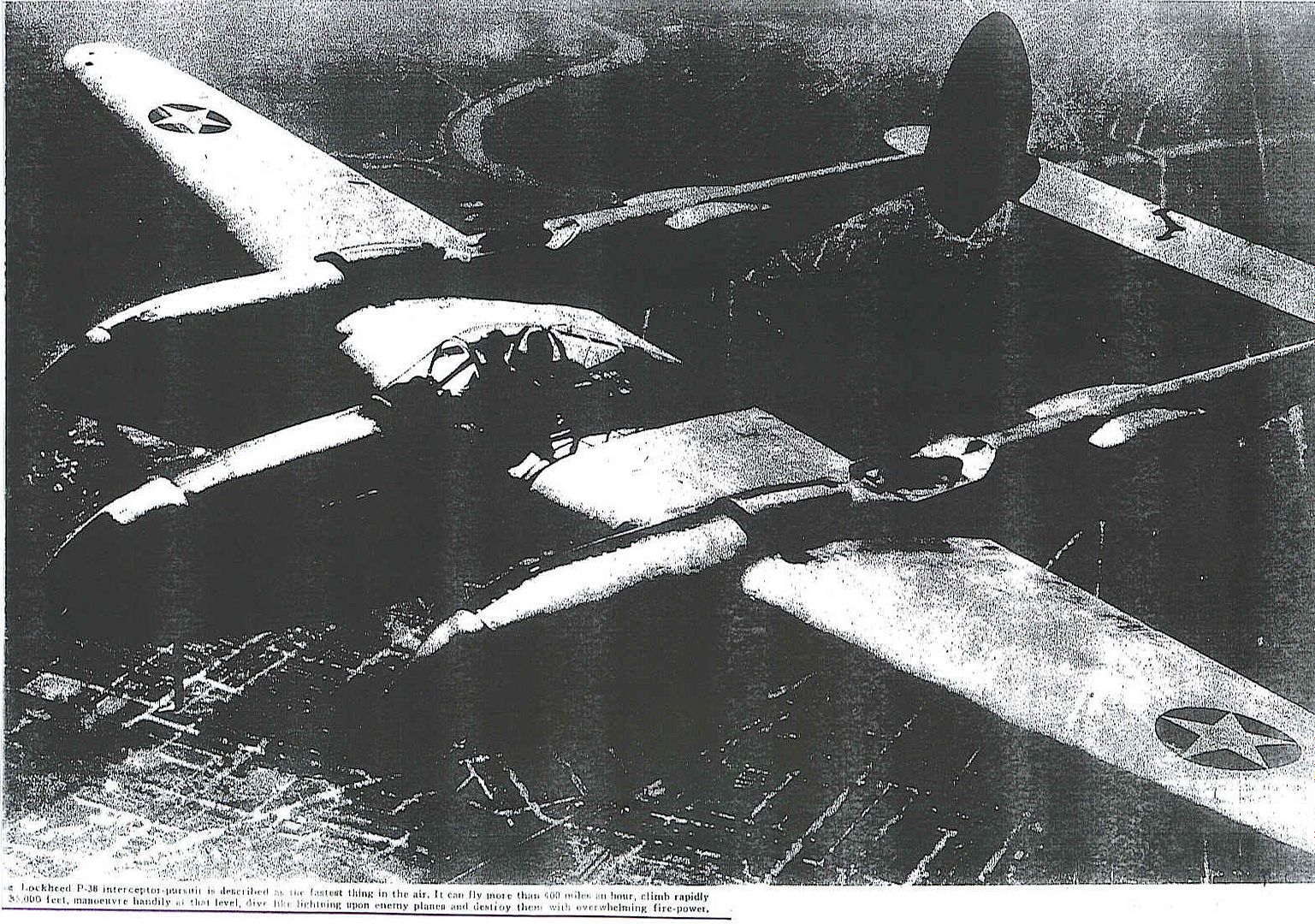



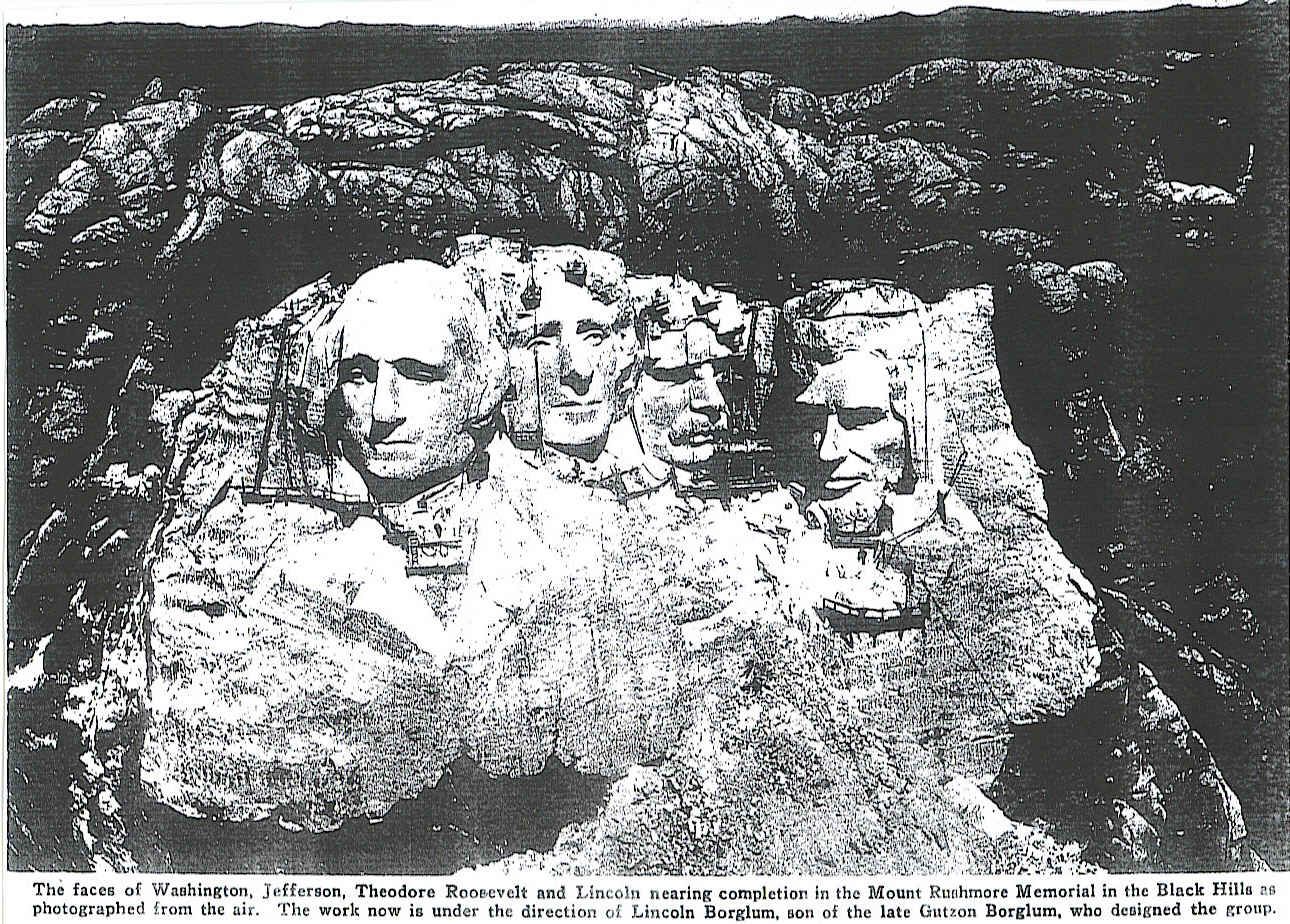
The News of the Week in Review
Twenty News Questions – 6
Japanese Ponder War on America – 7
Northwest Backs Ban on Oil to Japan – 7-8
Answers to Twenty News Questions – 8
The New York Times Book Review
Berlin Diary: The Journal of a Foreign Correspondent, 1934-1941, by William L. Shirer (Reviewed by George N. Shuster) – 10-11
The Wannsee Conference and the Final Solution: A Reconsideration, by Mark Roseman (Reviewed by CougarGA7) – 12
Rotogravure Picture Section
Power in the Air – 14-17
Mount Rushmore Memorial Nearing Completion – 18
http://www.onwar.com/chrono/1941/jun41/f22jun41.htm
German declares war on USSR
Sunday, June 22, 1941 www.onwar.com
On the Eastern Front... Operation Barbarossa, the German attack on the Soviet Union, begins. Despite the massive preparations spread over many months and the numerous indications Stalin receives from many sources, the Soviet forces are taken almost completely by surprise and lose very heavily in the first encounters. The Germans have assembled almost 140 of their own divisions, including 17 Panzer and 13 motorized divisions. These forces are organized in three army groups: Army Group North (Field Marshal Leeb), Army Group Center (Field Marshal Bock) and Army Group South (Field Marshal Rundstedt). Altogether, the Germans deploy over 3,000,000 men, 7100 guns, 3300 tanks, 625,000 horses and 2770 aircraft. The Red Army has 230 divisions (170 of which are in the west, 134 facing the Germans). The Soviet forces are organized into Northwest Front (Kuznetsov), West Front (Pavlov), Southwest Front (Kirpono) and South Front (Tyulenev). They include 24,000 tanks and 8000 aircraft. On the first day of the attack almost everything goes the German way. The attack begins at 0300 hours with advances on the ground and simultaneous air strikes. The Luftwaffe begins its operations very early in order to be over the Soviet bases exactly at zero hour. By noon the Soviet Air Force has lost around 1200 planes. The land battle is equally successful. The panzer spearhead Army Group North advances 40 miles during the day and Army Group Center captures most of the Bug River bridges intact. Army Group South forces based in Hungary and Romania do not attack during the day.
From London... Churchill broadcasts saying that help will be given to the Soviet Union. He says, “Any state who fights Nazism will have our aid... It follows therefore that we shall give whatever help we can to Russia.”
In Syria... There is heavy fighting in and around Marjayoun (June 22-29th) in which the Australians eventually drive the Vichy French forces into retreat.
http://homepage.ntlworld.com/andrew.etherington/month/thismonth/22.htm
June 22nd, 1941
UNITED KINGDOM: London: In a broadcast speech, Churchill promises to give all possible technical and economic help to the USSR. He says: “Any state who fights nazism will have our aid ... It follows therefore that we shall give whatever help we can to Russia.”
Figures published today reveal that since the start of the war the British armed forces have lost 18,627 killed, whereas civilian casualties are 35,756 killed. Proportionally the RAF has lost more than either the army or navy, and that its ration of killed is higher than that of other categories of casualties. The toll for the air force is 6,326 dead, 1,338 wounded, 1,879 missing and 408 prisoners.
Minesweeping trawler HMS Beech sunk by German aircraft off Scrabster, Scotland. (Dave Shirlaw)
GERMANY:
The Wehrmacht High Command announced:-
Since the early morning hours of today, we have been engaged in hostilities along the Soviet Russian border. An attempt by enemy aircraft to fly into East Prussia, has been repelled with heavy losses. German fighter planes shot down large number of Red bombers. In the struggle against the British Isles, powerful German aerial formations bombed the harbour installations of Southampton last night. Extensive fires broke out in the docks, warehouses and food manufacturing works. Further air attacks were aimed at airfields in northern Scotland and the Midlands. A large British freight vessel was severely damaged by bombs north of Sunderland. Yesterday afternoon a small number of British bombers with powerful fighter cover flew against the French Channel coast. German fighter planes shot down 26 British aircraft in violent dogfights. German flak and naval artillery brought down two more enemy aircraft. [German ace] Lt. Col. Galland won three air victories in these struggles.
U-467 laid down. (Dave Shirlaw)
MOSCOW: The NKVD requests all members of the German Embassy to leave their private residences and to assemble in the embassy chancellery. (Greg Kelley)(274 pp. 337-338)
SLOVAKIA severs diplomatic relations with the Soviet Union.
ROMANIA: 12 He 112s of Royal Romanian Air Force Grupul 5 escort a flight of Potez 63 light bombers on attacks on the Soviet airfields of Bolgrad and Bulgarica early in the morning.
During this attack Sublocotenent Aviator Teodor Moscu became Romania’s first fighter hero of the War, shooting down two Polikarpov I-16 fighters with credit for a third “probable”; Moscu’s Heinkel was badly shot up in the ensuing air battle where the Romanians were outnumbered nearly three to one, making a wheels-up emergency landing from which he walked away from. Moscu soon added a pair of additional victories to his aerial score, while his Heinkel was eventually repaired and returned to frontline service with Escadrila 51. (Greg Kelley)
FINLAND: Officially Finland is neutral in the Russo-German war, but in all practical respects Finland has committed herself to join the Barbarossa. Finnish Defence Forces are fully mobilized and stationed along the eastern border. In northern Finland German ground forces are already operating against the Soviets, and Luftwaffe is freely using designated Finnish airfields to attack Soviet targets.
But Finns are not just waiting for a proper excuse to start military operations. Early tonight, Finnish submarines lay mines in the Gulf of Finland. One infantry regiment and a light artillery battalion occupy the demilitarized Ahvenanmaa (Aland) islands in the Baltic Sea. Soviet planes attack the Finnish armored ships in nearby waters, but make no damage.
A sixteen-man Finnish long-distance patrol, clad in civilian clothing, is flown by two German He 115’s to the Soviet rear. Their mission is to destroy locks in the Stalin canal. The locks prove too well guarded, but on its way home the patrol cuts the Murmansk railway. It returns back to the Finnish lines on 11 July, with losses of two men. (Mikko Härmeinen)
U.S.S.R.: Operation Barbarossa: The German attack on the Soviet Union, Operation Barbarossa, begins. The Soviets are taken almost completely by surprise. The Germans have 140 of their own divisions, including 17 Panzer and 13 motorized divisions.
There are also 14 Rumanian, two Hungarian, and 21 Finnish divisions. Facing them are the 230 division of the Soviet Army. 170 divisions are in the western part of the Soviet Union and 134 are directly opposing the Germans. The attacks today begins at 0300 hours with ground and air attacks. Most German operations run according to plan.
A most significant setback is the taking of the citadel within the town of Brest Litovsk. This slows the use of the German communications network planned to be centered here.
The Finnish Army in June 1941 comprised of 16 (infantry) divisions, three brigades (two light infantry and one cavalry), and numerous independent units, among them two infantry regiments. (Mikko Härmeinen)
Moscow: Soviet Foreign Minister Molotov made the following declaration in the name of the Soviet Government. (Entire speech)
At 4:00 A.M. German Fascist and Rumanian forces crossed our borders without any notification of cause and without a declaration of war. Kiev, Sevastapol, Kovno and other cities were bombed. More than 200 people have been killed or wounded according to reports so far.
Germany attacked the Soviet Union along an 1,800 mile front from the Baltic to the Black Sea. The Germans have thrown 151 divisions into the battle, accompanied by tanks, guns and aeroplanes.
Stalin, despite the warnings given to him by Churchill and his own spies, seems to have been taken completely by surprise. The first that the Russians knew of the invasion was when the guns fired. At 4.00 A.M. Vladimir Dekanozov, the Soviet ambassador to Berlin, was called to the Wilhelmstrasse to be told that Germany had entered Russia in response to “border violations”.
In fact, the invasion is the culmination of months of planning by the German general staff, acting on Hitler’s orders. Operation Barbarossa is designed to destroy the Soviet Union and Bolshevism. Hitler is certain of success. he has told General Alfred Jodl: “We have only to kick in the door and the whole rotten structure will come crashing down.” In a proclamation broadcast this morning Hitler boasted that the German army’s movements were “the greatest the world has ever seen.” First reports indicate that the Finns and Romanians are fighting alongside the German.
Six transport Gruppen are allocated to provide the Luftwaffes air transport component.
1., 2., and 3 Staffel of the OKL’s Aufklarungsgruppe are present with the high-alititude Ju 86Ps.
7 Stukagruppen are placed at the disposal of II. and VIII. Fliegerkorps, II. and III./St.G 1 with 70 aircraft, I. and III./St.G 2 with 83 aircraft, and the whole of St.G 77 with 122 aircraft. In addition, IV.(St)/LG 1 is operational in northern Norway with 42 Ju 87Bs.
The Luftwaffe’s fighter force consists of JG 3 under Maj Gunther Lutzow equipped with the Bf 109F; II and III./JG 27 under Maj Wolfgang Schnellmann with the Bf109E; JG 51 under Molders with the Bf109F, II and III./JG 52 under Maj Hans Trubenbach with the Bf109E; JG 53 under Maj Gunther von Maltzahn with the Bf 109F; JG 54 under Maj Hannes Trautloft with the Bf109F; and JG 77 under Maj Bernhard Woldenga with the Bf109E. There is a single Bf110 equipped Zerstorergeschwader, ZG 26 Horst Wesel.
The Luftwaffe claims 1,811 Soviet aircraft for the loss of 32 of its own machines.
The attack started at 03.15 hr with strikes against Russian airfields in an attempt to wipe the Red Air Force out on the ground. The airfields were so widely dispersed that it is only possible to allocate three bombers to attack each. Many of the Ju88s and Do17s carry 2kg SD 2 and 10kg SD 10 fragmentation bombs, the latter being dropped from high altitudes in bundles of four. These prove extremey effective against aircraft and personnel but have an unfortunate habit of failing to release from the aircraft’s bomb racks. The bombs would become fused and a slight jolt would cause them to detonate and blow the aircraft to pieces.
The initial attack on the Soviet airfields is followed by the bombing of Moscow, by Ju88s of KG 3 and KG 54 and He 111s of III./KG 26, part of KG 28, KG 53 and Kgr 100. 127 bombers take part in the raid dropping 104 tons of HE and 46,000 indenciary bombs.
Romanians enter Bessarabia to retake it. Making a maximum effort, the Romanian Air Force also loses 11 planes on this day. Specifically four Blenheims, two SM-79Bs, two PZL P.37s, one Potez 63, one IAR-37 and one IAR-39. The Romanians in turn claim eight Soviet aircraft plus three to their anti-aircraft artillery and claim 37 Soviet aircraft destroyed on the ground. (Mike Yaklich)
ITALY: Rome: Italy declares war on the Soviet Union.
MEDITERRANEAN SEA: A surface encounter takes place during the night between the Vichy French super-destroyer GUEPARD and the light cruiser HMS LEANDER. The GUEPARD is damaged by a 6” shell from LEANDER. (Peter Beeston)
SYRIA: After evacuation of Damascus, Colonel Keime’s weary French force of V/1st Moroccan, I and III/17th Senegalese, III/24th Colonial and I and III/29th Algerian battalions withdraw through the mountains to the Barada Gorge, dominating the Beirut-Damascus Road. At Palmyra, Habforce (4 Cav Bde, 1/Essex and Arab Legion) is under persistent French air attack. Maj-Gen Clark calls for urgent air support. Nine Gladiators arrive but airfield cannot be defended and they withdraw to Iraq. On the central axis, 6th Aust Cav have formed a horsed troop from captured French cavalry horses, which patrols from Merdjayoun. (Michael Alexander)
CANADA: Corvette HMCS Saskatoon arrived Halifax from builder Montreal, Province of Quebec. (Dave Shirlaw)
NEWFOUNDLAND: US Marines sail from Argenta bound for occupation duty in Iceland. (Dave Hornford)
U.S.A.: In baseball, the Detroit Tigers and the New York Yankees complete their three game series at Yankee Stadium in New York. Yankee star Joe DiMaggio goes 2-for-5 against Tiger pitchers Hal Newhouser and Bobo Newsom. DiMaggio’s home run and single extend his hitting streak to 35-games. (Jack McKillop)
ATLANTIC OCEAN:
At 0329, the Calabria, dispersed from Convoy SL-76, was torpedoed and sunk by U-141 about 100 miles 280° from Inishtrahull lightship.
At 2236, the weather ship Arakara was torpedoed and sunk by U-77 east of St John’s. The U-boat misidentified the ship as the Greek steam merchant Alexandra. The master, 32 crewmembers and 12 Admiralty personnel were lost. (Dave Shirlaw)
Things are really starting to heat up on the international front now.....
BTW, surely question #13 deals with “legal” aliens?
It is amazing that the Times has such extensive coverage on the very morning of the attack on Russia.
The Germans are about to find out that the Soviets have some very good tanks as this account from one Soviet offier:
"The Germans started bombing the column...A shell from a German anti-tank gun bounced off the tank's heavy armour...Gudz, who was the tank's gunner as well as its commander, fired a single shot in return and the gun was destroyed. He and his platoon went on to knock out five German tanks, three armoured personnel carriers and several cars...After lunch the Germans attacked again. Gudz knocked out three more tanks. His driver Galkin rammed another German tank, dislodging its caterpillar track and forcing it into a ditch. the fields were covered with burned-out tanks and dead Germans." - Report on junior Soviet officer Lieutenant Pavel Gudz commanding 5 KV-1s and 2 T-34s on the first day of war with Germany.
Panzer Group 3 also noted that the resistance was more tenacious than expected:
"Where the enemy appears he fights tenaciously and courageously to the death. Defectors and those seeking to surrender were not reported from any position. The struggle, as a result, will be harder than those in Poland and the Western campaign" - Panzer Group 3 War Diary.
From the Kremlin Minister of Foreign Affairs Molotov makes a radio announcement of the German invasion, but is still unwilling to believe that total war had begun. But this will not prevent Stalin from issuing Directive No. 3 which ordered a general counter offensive against the Germans.
NKO Directive No. 3NKO Directive No. 3 to the Military Councils of the Northwestern, Western, Southwestern and Southern Fronts.
Concerning Force Missions on 23-26 June
2115 hours 22 June 19411. Delivering main attacks from the Suvalki salient to Olita and from the Zamost'e region to the Vladimir-Volynskii and Radzekhov front and secondary attacks along the Til'sit, Shauliai and Sedlits, Volkovysk axes, during the course of 22 June the enemy has achieved considerable success while suffering great losses.
In the remaining sector of the stat border with Germany and on the entire state border with Rumania, the enemy attacks have been beaten off with heavy losses to him.2. I assign the forces [the following] immediate mission for 23-24 June:
a) Encircle and destroy the enemy's Suvalki grouping by concentric, concentrated attacks by the Northwestern and Western Fronts and capture the Suvalki region by day's end of 24 June.
b) Encircle and destroy the enemy grouping attacking in the direction of Vladimir-Volynskii and Brody by powerful concentric attacks by mechanized corps, all southwestern Front aircraft and other forces of the 5th and 6th Armies. Capture the Lublin region by day's end on 24 June.3. I ORDER:
a) The Norther Front's armies to continue to protect the state borders firmly. The left boundary - as exists.
b) While firmly holding on to the coast of the Baltic Sea, the Northwestern Front's armies will deliver a powerful counter stroke from the Kaunas region against the flanks and rear of the enemy's Suvalki grouping, destroy it in cooperation with the Western Front and capture the Suvalki region by day's end on 24 June.
The left boundary - as exists.
c) While containing the enemy on the Warsaw axis, the Western Front's armies will deliver a powerful counterstroke with a force of no fewer than two mechanized corps and frontal aviation against the flank and rear of the enemy's Suvalki grouping, destroy it in cooperation with the Northwestern Front and capture the Suvalki reion by day's end on 24 June.
The left boundary - as exists.
d) While holding firmly to the border with Hungary, the Southwestern Front's armies will encircle and destroy the enemy grouping advancing on the Vladimir-Volynskii, Krystypol' front with concentric attacks in the general direction of Lublin with the 5th and 6th Armies, no fewer than five mechanized corps and all of the front's aviation, and capture the Lublin region by day's end on 24 June. Cover yourself reliably along the Krakov axis.
e) The Southern Front's armies will prevent an enemy invasion of our territory. In the event the enemy attacks along the Chernovtsy axis or forces the Prut and Danube Rivers, destroy him by powerful flank attacks by ground forces in cooperation with aviation; concentrate two mechanized corps in the Kishinev region and the forests northwest of Kishinev on the night of 23 June.4. I authorize crossing of the borders along the front from the Baltic Sea to the state border with Hungary and operations without regard for the borders.
5. The Aviation of the High Command:
a) Support the Northwestern Front with one flight from the 1st Long-range Aviation Corps and the Western Front with one flight from the 3rd Long-range Aviation Corps while they are fulfilling their missions of destroying the enemy's Suvalki grouping.
b) Assign the 18th Long-range Aviation Corps to the Southwestern Front and support the Southwestern Front with one flight from the 2nd Long-range Aviation Corps while it is fulfilling its mission of destroying the enemy's Lublin grouping; and
c) Leave the 4th Long-range Aviation corps at my disposal in the readiness to assist the Southwestern Front and, wioth part of its forces, the Black Sea Fleet.The People's Commissar of Defense.
Marshal of the Soviet Union TimoshenkoMember of the Main Military Council
MalenkovChief of the Red Army General Staff
Army General ZhukovSent at 2115 hours 22 June 1941
Along with this directive the Supreme Soviet drafts most of its reservists born between 1905 and 1918 into the Red Army.
Homer and I were discussing this the other day and I figured that the artillery barrage which started at 0315 would have been at 1915 Pacific Time on the 21st. Afterwards when I was thinking about it I realized that I was using Greenwich Mean Time to make that calculation and the Soviet frontier would actually have been in a later time zone (GMT+2). If the Germans also exercised Daylight Savings Time like the Americans and British did, that would put the start of the war with Russia at about 1715 Pacific Time, 2015 Eastern. So basically, around supper time last night, well within press time for the late edition.
Bump for later read.
As though a gigantic switch had been thrown, a huge flash of lightning rent the night.
Guns of all calibers simultaneously belched fire. The tracks of tracer shells streaked across the sky. As far as the eye could see the front on the Bug was a sea of flames and flashes. A moment later the deep thunder of the guns swept over the tower of Volka Dobrynska like a steamroller. The whine of the mortar batteries mingled eerily with the rumble of the guns. Beyond the Bug a sea of fire and smoke was raging. The narrow sickle of the moon was hidden by a veil of cloud.
Peace was dead. War was drawing its first terrible breath.
Directly opposite the citadel of Brest stood the 45th Infantry Division—formerly the Austrian 4th Division—under Major-General Schlieper. The 130th and 135th Infantry Regiments were to mount the first assault against the bridges and the citadel. Still under cover of darkness the units composing the first wave had carefully worked up to the Bug. Like a black phantom, the railway bridge straddled the river. At 0200 a goods train chugged over the bridge, puffing, lamps brightly lit. It was the last grain train which Stalin sent his ally Hitler.
Above them, by the little wooden hut at the end of the bridge, reigned an atmosphere of peace and unsuspecting normality. The two German customs officials climbed on to the train. The sentry waved his hand to the Russian engine-driver. If any mistrustful eyes were watching from the far side they would see nothing suspicious or unusual. Slowly the engine puffed on towards the station of Terespol on the German side.
Then here too the minute-hand jumped to 0315.
"Fire!" And the hell dance began. The earth trembled.
The 4th Special Purpose Mortar Regiment with its nine heavy batteries lent a particular note to the inferno. Within half an hour 2880 mortar-bombs screamed with terrifying howls across the Bug into the town and the fortress. The heavy 60-cm. mortars and 21-cm. guns of 98th Artillery Regiment lobbed their shells across the river, into the ramparts of the fortress, and against pin-pointed Soviet gun positions. Was it possible for a single stone to be left standing after this?
It was possible.
That was to be the first of many nasty surprises.
Second Lieutenant Zumpe of 3rd Company, 135th Infantry Regiment, had watched the last few seconds tick away before 0315. At the very first crash of gunfire he leapt out of his ditch by the railway embankment.
"Let's go!" he shouted to the men of his assault detachment. "Let's go!" Steel helmets rose up from the tall grass. Like sprinters the men tore across to the bridge—the second lieutenant in front. Past the abandoned German customs hut. The gunfire drowned the clatter of their boots on the heavy planks of the bridge. Ducking along the high parapet on both sides, they ran across. Always at the back of their minds was the fear: will the bridge go up or not?
It did not go up. A single burst of fire from his sub-machine-gun was all the Soviet sentry had time for. Then he heeled over forward.
At that moment a machine-gun opened up from the dugout of the bridge guard. That had been expected. Lance-Corporal Holzer's light machine-gun sprayed the Russian position. Like a handful of fleeting shadows the obstacle-clearing detail of the 1st Company, Engineers Battalion 81, assigned to Zumpe's assault detachment, rushed to the spot. A dull thud; smoke and fumes. Finished.
Zumpe's men raced past the shattered dugout. They flung themselves down to the right and left of the bridge by the railway embankment, their machine-guns in position. The second lieutenant and the sappers ran back on to the bridge. The charge was fixed to the central pier. Out with it. Zumpe ran the beam of his flashlight over the pier, to make sure no other infernal machine was hidden anywhere. Nothing. He slid the green shield over the lens. The green light. Like a station-master he waved it above his head towards the German side: bridge clear! And already the first armored scout-cars were racing across.
But what would happen if the Russians attacked the bridgehead with armor?
How would the Germans oppose them? Tanks and heavy equipment could have been brought across only with the greatest difficulty in barges or over emergency bridges. That was why an interesting new secret weapon was employed here for the first time—underwater tanks, also known as diving tanks. They were to cross the river under water, just like submarines. Then, on the far bank, they were to go into action as ordinary tanks, smashing enemy positions along the river and intercepting any counter-attacks.
In the sector of 18th Panzer Division fifty batteries of all calibers opened fire at 0315 in order to clear the way to the other bank for the diving tanks.
[General Nehring, the divisional commander, has since described this as "a magnificent spectacle, but rather pointless since the Russians had been clever enough to withdraw their troops from the border area, leaving behind only weak frontier detachments, which subsequently fought very bravely."]
At 0445 hours Sergeant Wierschin advanced into the Bug with diving tank No. 1. The infantrymen watched him in amazement. The water closed over the tank. "Playing at U-boats!" Only the slim steel tube which supplied fresh air to the crews and engine showed above the surface, indicating Wierschin's progress under water. There were also the exhaust bubbles, but these were quickly obliterated by the current.
Tank after tank—the whole of 1st Battalion, 18th Panzer Regiment, under the battalion commander, Manfred Graf Strachwitz—dived into the river.
And now the first ones were crawling up the far bank like mysterious amphibians. A soft plop and the rubber caps were blown off the gun muzzles. The gun-loaders let the air out of the bicycle inner tubes round the turrets. Turret hatches were flung open and the skippers wriggled out. An arm thrust into the air three times: the signal "Tanks forward."
Eighty tanks had crossed the frontier river under water. Eighty tanks were moving into action.
Their presence was more than welcome in the bridgehead. Enemy armored scout-cars were approaching. At once came the firing orders for the leading tanks: "Turret—one o'clock —armor-piercing—800 yards—group of armored scout-cars —fire at will." The monsters fired. Several armored scout-cars were burning. The rest retreated hurriedly. The armored spearheads of Army Group Centre moved on in the direction of Minsk and Smolensk.
South of Brest too, at Koden, following the successful assault on the bridge, the surprise attack of XXIV Panzer Corps, under General Freiherr Geyr von Schweppenburg, had gone according to schedule. The tanks crossed the bridge, which had been captured intact. Advanced units of Lieutenant-General Model's 3rd Panzer Division crossed on rapidly built emergency bridges. The skippers stood in the turrets, scanning the landscape for the rearguards of the retreating Soviet frontier troops, overrunning the first anti-tank-gun positions, waving the first prisoners to the rear, moving nearer and nearer to their objective for the day— Kobrin on the Mukhavets.

On the morning of June 22, 1941 German troops cross a damaged bridge over the River Bug.
North of Brest, near Drohiczyn, where Engineers Battalion 178 lay close to the Bug in the area of 292nd Infantry Division, in order to build a pontoon bridge as soon as possible for the heavy equipment of the divisions of IX Corps, everything went also according to plan. The reinforced 507th and 509th Infantry Regiments—with the 508th farther to the right— raced across the Bug in rubber dinghies and assault craft under heavy artillery cover. Within half an hour the Soviet pickets on the far bank were wiped out and a bridgehead was established. At the first artillery salvo the sappers had leaped to their feet and moved their first pontoons into the water. For a quarter of an hour the Russians fired from the far bank with machine-guns and rifles; then they fell silent. By 0900 exactly the bridge was finished—the first within the area of the Fourth Army. The heavy equipment rumbled over the swaying pontoons. The 78th Infantry Division was already lined up in close order to cross the river.
Of all the coups planned against the frontier bridges along the five-hundred-mile-long Bug not one went wrong. Similarly all the envisaged bridge-building operations across the frontier river succeeded, with the sole exception of one within the area of 62nd Infantry Division, which, belonging to the Sixth Army, was already part of the northern wing of Army Group South.
On the southern wing of the Army Group, where the frontier was formed by the river San, the divisions of General von Stülpnagel's Seventeenth Army found things more difficult. The bank of the San north of Przemysl ; was as flat as a pancake —without woods, without ravines, without any cover for whole regiments. That was why the assault battalions of 275th Infantry Division, from Berlin, could not move out of their deployment areas until the night of 21st/22nd June. "Not a sound" was the order of the regimental commander. Weapons were packed in blankets; bayonets and gas-mask cases were wrapped round with any soft material that was handy. "Thank God for the frogs," whispered Second Lieutenant Alicke.
Their croaking drowned the creaking, rattling, and bumping of the companies making their way towards the river.
At 0315 precisely the assault detachments leaped to their feet on both sides of Radymno. The railway bridge was seized by a surprise stroke. But in front of the customs shed the Russians were already offering stubborn resistance. Second Lieutenant Alicke was killed. He was the division's first fatal casualty, the first of a long list.
The men laid him beside the customs shed. The heavy weapons rolled on by him, over 'his' bridge.
In the south the Soviet alarm system functioned with surprising speed and precision. Only the most forward pickets were taken by surprise. The 457th Infantry Regiment had to battle all day long with the Soviet Non-commissioned Officers' Training School of Vysokoye, only a mile beyond the river. The 250 NCO cadets resisted stubbornly and skillfully. Not till the afternoon was their resistance broken by artillery-fire. The 466th Infantry Regiment fared even worse. No sooner were its battalions across the river than they were attacked from the flank by advanced detachments of the Soviet 199th Reserve Division.
In the fields of Stubienka the tall grain waved in the summer wind like the sea. Into this sea the troops now plunged. Both sides were lurking, invisible. Stalking each other. Hand-grenades, pistols, and machine carbines were the weapons of the day Suddenly they would be facing one another amid the rye—the Russians and Germans. Eye to eye. Whose finger was quicker on the trigger? Whose spade would go up first? Over there a Russian machine pistol appeared from a foxhole. Would it score with its burst? Or would the hand-grenade do its work first? Only with the fall of dusk did this bloody fighting in the rye-fields come to an end. The enemy withdrew.
The sun set behind the horizon, large and red. And still from amid the grain came the voices, despairing, anguished, or softly dying away: "Stretcher! Stretcher!" The medical orderlies hurried into the fields with their stretchers. They gathered in the bloody harvest. The harvest of one day, of one regiment.
It was a big harvest.
The German troops were beginning to realize that this was not an opponent to be trifled with. These men were not only brave but also full of guile. They were masters at camouflage and ambush. They were first-rate riflemen. Fighting from an ambush had always been the great strength of the Russian infantry. Forward pickets, overrun and wounded, would wait for the first German wave to pass over them. Then they would resume fighting. Snipers would remain in their foxholes with their excellent automatic rifles with telescopic sights, waiting for their quarry. They would pick off the drivers of supply vehicles, officers, and orderlies on motor-cycles.
The 126th Infantry Division, from Rhine-Westphalia, fighting alongside the men from Schleswig-Holstein, also learned a bitter lesson from the tough Soviet frontier troops. The 2nd Battalion, 422nd Infantry Regiment, suffered heavy losses. Parts of a Soviet machine-gun picket had hidden themselves in a cornfield and allowed the first wave of the attack to pass by. In the afternoon, when Captain Lohmar unsuspectingly led his battalion from reserve positions to the front, the Russians in the crops suddenly opened up. Among those killed was the battalion commander, among the seriously wounded was his adjutant. It took an entire company three hours to flush the four Russians out of the field. They were still firing when the Germans had got within ten feet of them, and had to be silenced with hand-grenades.
Disclaimer: Opinions posted on Free Republic are those of the individual posters and do not necessarily represent the opinion of Free Republic or its management. All materials posted herein are protected by copyright law and the exemption for fair use of copyrighted works.